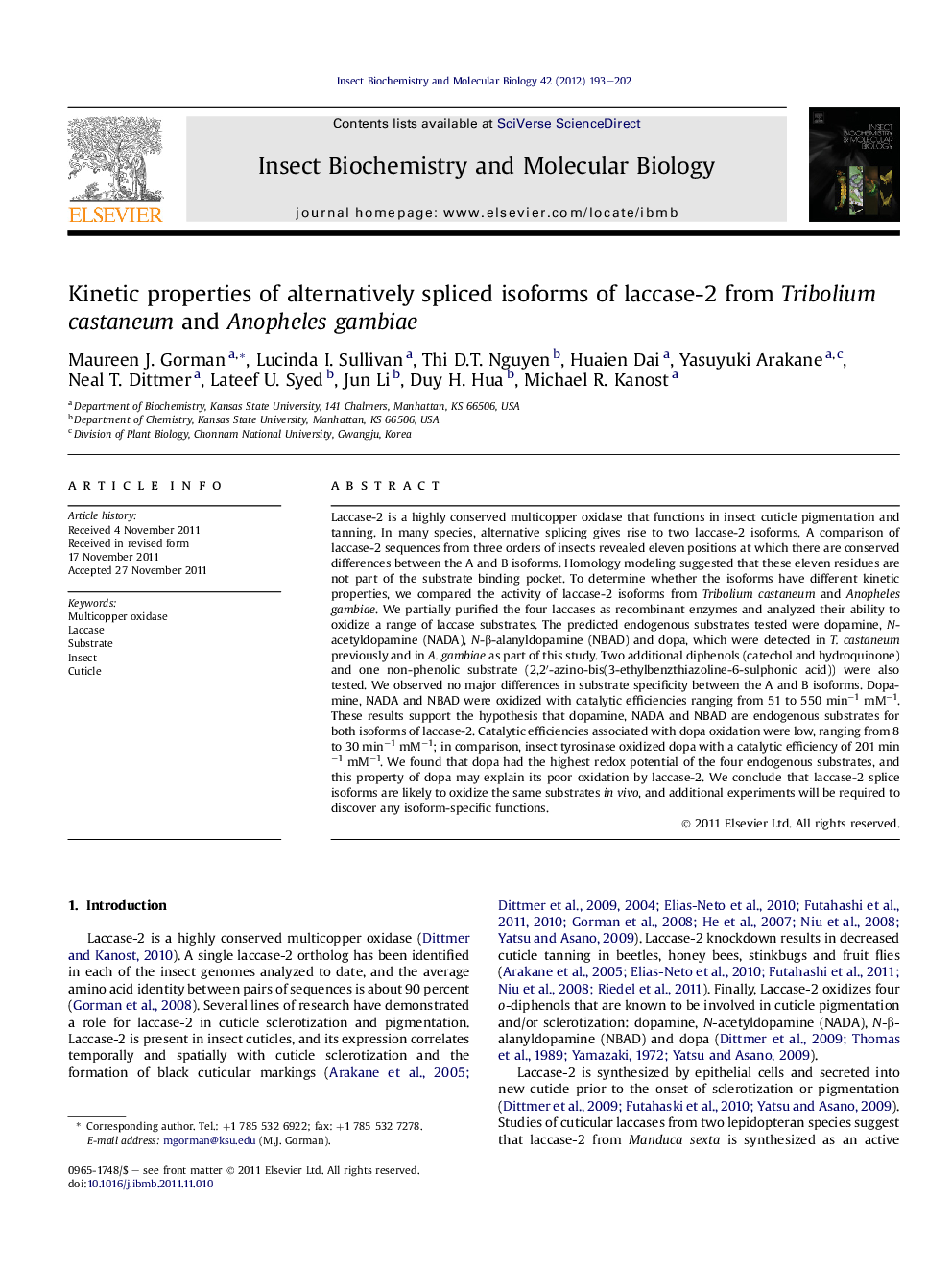| Article ID | Journal | Published Year | Pages | File Type |
|---|---|---|---|---|
| 1982259 | Insect Biochemistry and Molecular Biology | 2012 | 10 Pages |
Laccase-2 is a highly conserved multicopper oxidase that functions in insect cuticle pigmentation and tanning. In many species, alternative splicing gives rise to two laccase-2 isoforms. A comparison of laccase-2 sequences from three orders of insects revealed eleven positions at which there are conserved differences between the A and B isoforms. Homology modeling suggested that these eleven residues are not part of the substrate binding pocket. To determine whether the isoforms have different kinetic properties, we compared the activity of laccase-2 isoforms from Tribolium castaneum and Anopheles gambiae. We partially purified the four laccases as recombinant enzymes and analyzed their ability to oxidize a range of laccase substrates. The predicted endogenous substrates tested were dopamine, N-acetyldopamine (NADA), N-β-alanyldopamine (NBAD) and dopa, which were detected in T. castaneum previously and in A. gambiae as part of this study. Two additional diphenols (catechol and hydroquinone) and one non-phenolic substrate (2,2′-azino-bis(3-ethylbenzthiazoline-6-sulphonic acid)) were also tested. We observed no major differences in substrate specificity between the A and B isoforms. Dopamine, NADA and NBAD were oxidized with catalytic efficiencies ranging from 51 to 550 min−1 mM−1. These results support the hypothesis that dopamine, NADA and NBAD are endogenous substrates for both isoforms of laccase-2. Catalytic efficiencies associated with dopa oxidation were low, ranging from 8 to 30 min−1 mM−1; in comparison, insect tyrosinase oxidized dopa with a catalytic efficiency of 201 min−1 mM−1. We found that dopa had the highest redox potential of the four endogenous substrates, and this property of dopa may explain its poor oxidation by laccase-2. We conclude that laccase-2 splice isoforms are likely to oxidize the same substrates in vivo, and additional experiments will be required to discover any isoform-specific functions.
Graphical abstractFigure optionsDownload full-size imageDownload high-quality image (180 K)Download as PowerPoint slideHighlights► Laccase-2 is a conserved multicopper oxidase that functions in cuticle tanning. ► Laccase-2 is alternatively spliced to generate two isoforms. ► The main differences between the isoforms lie outside of the predicted substrate binding pocket. ► The catalytic efficiencies of the two isoforms are similar for a range of substrates. ► In conclusion, laccase-2 isoforms are likely to oxidize the same substrates in vivo.
